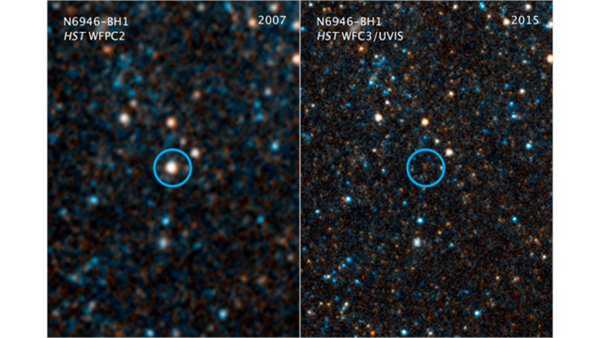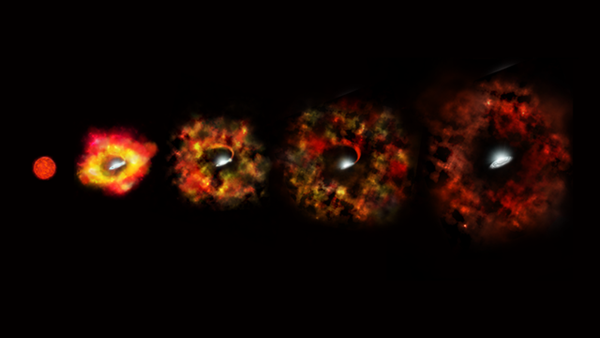Key Takeaways:
- Hubble Space Telescope observations suggest the potential detection of a "massive fail" supernova event.
- This event involved a massive star whose core collapsed, but instead of a typical supernova explosion, the expelled gas was seemingly re-absorbed by a newly formed black hole.
- The observed star, located in galaxy NGC 6946 at a distance of 22 million light-years, exhibited a rapid and complete dimming, consistent with this hypothesis.
- The occurrence of such "massive fails" is considered rare, with only a few previously documented instances.
When a massive star expends its fuel, its core collapses into a dense object and sends the rest of its gas outward in an event called a supernova. What’s left is mostly neutron stars or black holes. And now, Hubble seems to have seen a supernova blink out — suggesting it captured the moment when a black hole took over.
While some supernova events are explosive and leave clouds of debris for thousands of years (aka nebula) like SN 1054, the star in question seems to have begun to explode and then had all its gas sucked right back into the black hole at the center. This can happen when the core collapse of the star is especially massive. Rather than exploding, the gas collapses directly into the core of the star.
Only a few of these so called “massive fails” (yes, that’s what they’re calling them) have been spotted, so astronomers are cautious about the results. But this particular star, located in the galaxy NGC 6946, was bright enough to see from 22 million light years away and faded in an instant, suggesting a massive stellar-mass black hole was the driving culprit.
Want to learn more about the most exotic objects in the universe? Download our FREE eBook, Exotic Objects: Black holes, Pulsars, and more!











